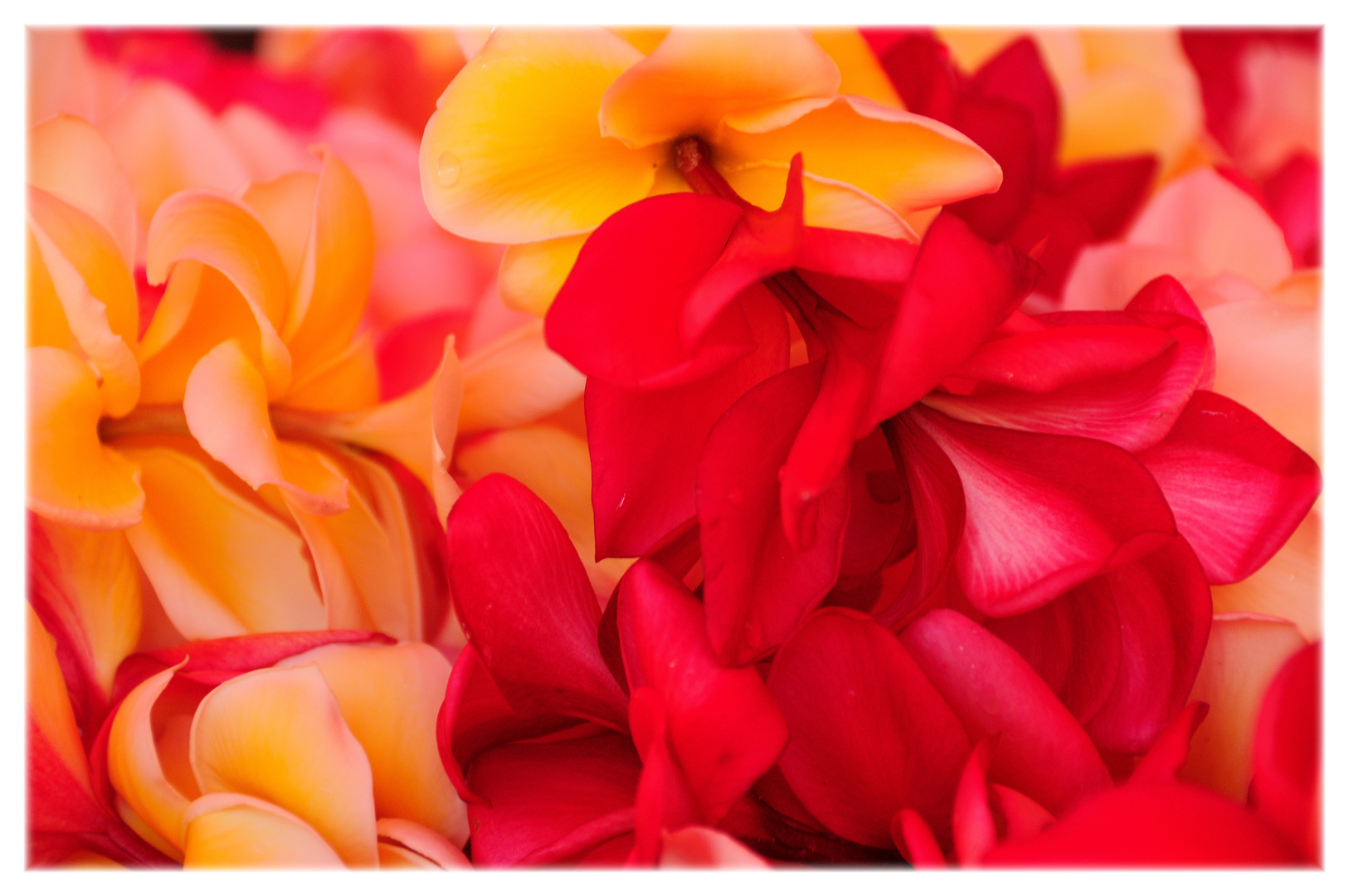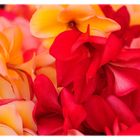plumeria
A lei may be composed of a pattern or series of just about anything, but most commonly consists of fresh natural foliage such as flowers, leaves, vines, fern fronds, and seeds. The most commonly used flowers are those of plumerias, a lehua, orchids, and pikake, though maile leaves, ferns, and ti leaves are extremely popular as well as traditional among hula dancers.
In Polynesian cultures, a lei is something that is created by someone and given to another with the intent to decorate that person for an emotional reason, usually as a sign of affection.
Common reasons include greeting, farewell, affection or love, friendship, appreciation, congratulation, recognition, or to otherwise draw attention to the recipient.
In Samoa, similar garlands fashioned of entire flowers, buds, seeds, nuts, plant fibers, leaves, ferns, seashells, or flower petals are called "asoa" or "ula", while single flowers or clusters worn in the hair or on the ear are called sei. In Tahiti such garlands are referred to as 'hei' and in the Cook Islands they are called an 'ei.`
Tongans are known for creating unique 'kahoa' leis made of chains of flat, crescent or triangular arrangements made of flower petals and leaves sewn onto a leaf or cloth backing.
Among residents of Hawai'i, the most popular occasions at which lei can be found are birthdays, graduations, weddings, funerals, retirement parties, and bridal showers.
(source: Wikipedia)










Nena 21/05/2011 19:38
Feines Makro !!!LG, Nena
kamerablick 21/05/2011 19:37
erinnert mich an den Inhalt eine Körbchens zum Blumenstreuen ;-)herrliches Blütenfarbspiel!
vg claudi
Knut Geissler 21/05/2011 19:37
Feine Farben.LG Knut
Matthias Endriß 21/05/2011 19:34
Ein flammendes Blumenfeuerwerk... Schöne Farben.LG Matthias